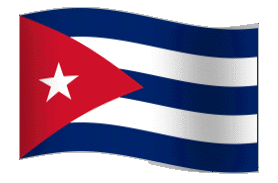Fidel Castro was the son of a wealthy Spanish landowner, a brilliant student and gifted athlete, enrolling at the law school of the University of Havana in 1945. There, he achieved notoriety for his intelligence as well as short temper and impulsiveness(1). After graduating from the University of Havana, he was campaigning for a seat in Cuba’s House of Representatives, when Batista’s coup d'état derailed his aspirations. Castro was enraged by this; then taking two steps. First, he filed for a legal brief against Batista, accusing him of violating the Cuban Constitution of 1940. Then, even more infuriated, he plotted to overthrow the new regime by taking over a garrison and calling upon the people of Cuba to rebel against Batista and establish a new government(2).
After being sentenced to 20 years of imprisonment in Cuba after becoming a committed communist, Castro received amnesty at the end of 22 months and sought exile in Mexico to continue to plot the revolution. Castro’s goal was to overthrow Batista and make Cuba an isolated communist ruled country. As wars broke out, Cuba’s upper class, which always detested Batista, started to favor Castro and turn to his side. As Castro started to draw in the upper and middle classes, Batista found himself isolated. Due to this, the U.S. began to turn against Cuba as atrocities began to make headlines. Pressure was put on the U.S. to end ties with Batista, and as a result, arms embargo was put in place.
Castro’s tactics wore down Batista’s soldiers who were young and inexperienced, and not nearly as motivated as the rebels. Batista's own men doubted his abilities as a commander, and some of the older officers negotiated privately with Castro to switch sides(3). Batista discovered that one of his key generals was negotiating with Castro to turn him over to the rebels. This discovery, coupled with setbacks on the battlefield and diminishing support from Washington, convinced him to flee Cuba. He never returned to the island and spent the last years of his life writing a book in an effort to restore his image as a revolutionary leader(4).
In late 1959 and early 1960 Castro and the revolution veered sharply to the left, resulting in a cold war alliance with the Soviet Union. Support from Moscow enabled Castro to break relations with the United States and sever long-standing economic and political ties. The revolution eventually nationalized all U.S. companies, eliminated almost all forms of private property, and created neighborhood watch organizations to monitor anti-revolutionary behaviors, known as Committees for the Defense of the Revolution(5). Castro’s controlling ways had finally separated all connections with Cuba and the U.S. causing permanent tension.
_____________________________________________________
(1)Figueredo, D. H., and Frank Argote-Freyre. "dictatorship and revolution in Cuba." A Brief History of the Caribbean, Brief History. New York: Facts On File, Inc., 2008. Modern World History Online, Facts On File, Inc. http://www.fofweb.com/ (accessed May 28, 2013).
(2) "Ibid"
(3) "Ibid"
(4) "Ibid"
(5) "Ibid"



No comments:
Post a Comment